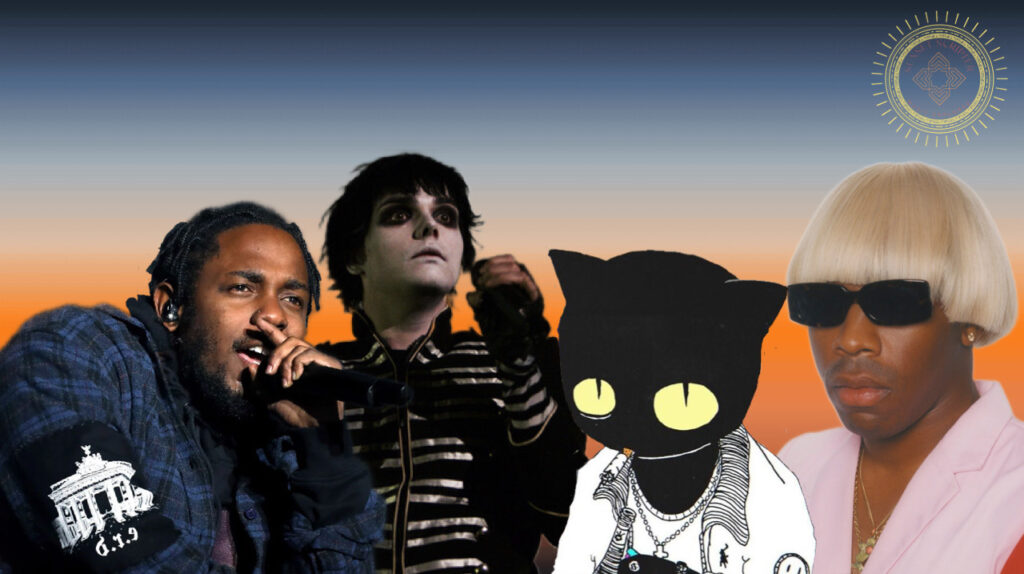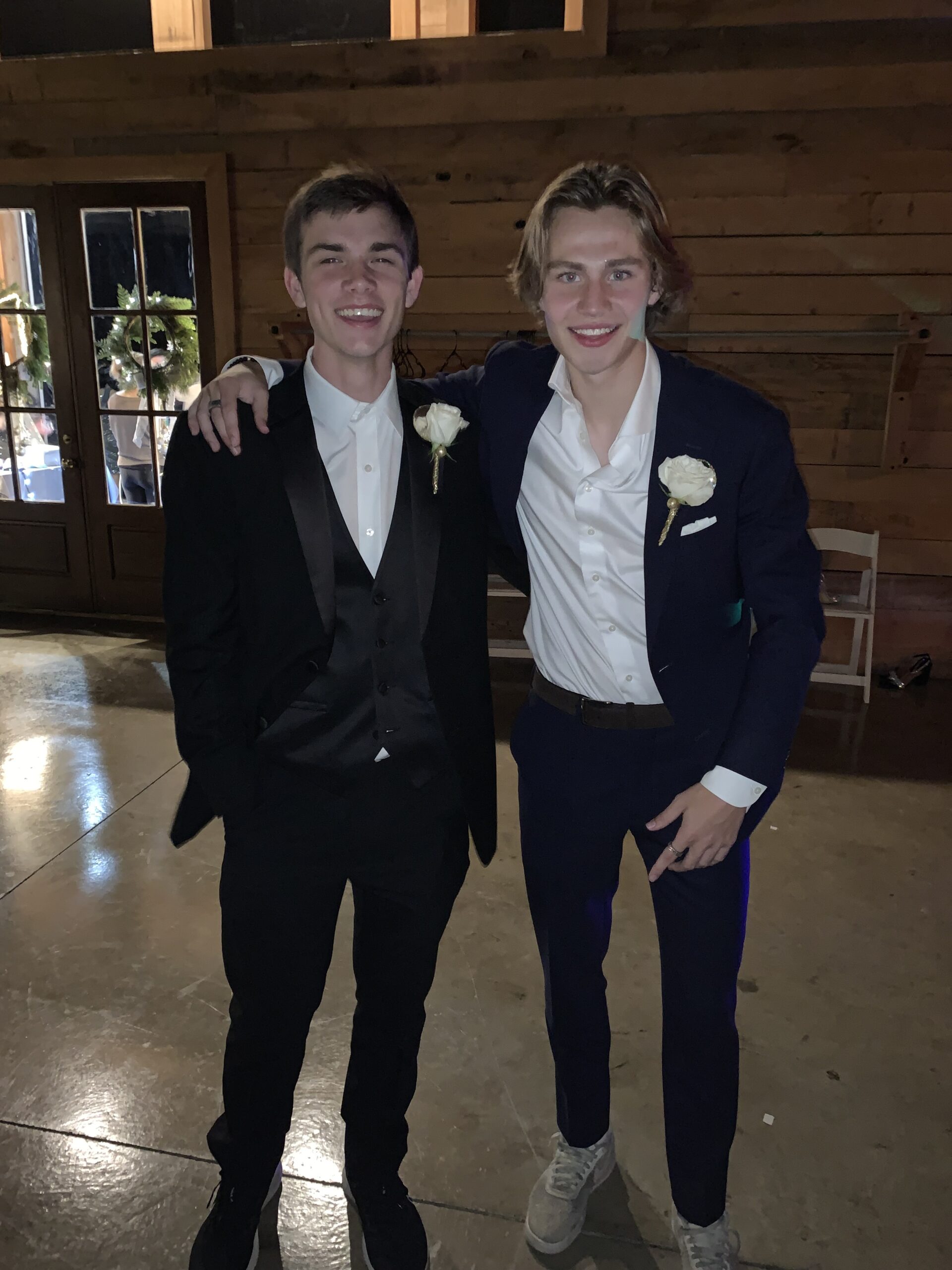Storytelling is a skill that takes a mix of intellect and creativity. Whether it be in literature or film, storytelling is fundamental to the quality of the product. This extends into the world of music, as well. Some of the earliest known songs are stories; for example, Odyssey by Homer is one of the most well-known stories of Ancient Greece, released in 8 B.C. This epic was originally intended to be distributed through oral performance instead of reading it as a poem like many students today. Yet, it appears as though storytelling has lost its place in music, or at least how intricate it once was.
Several of the world’s most famous songs are centered around telling a story; songs like “Bohemian Rhapsody”, “Billie Jean”, and “Piano Man” each have their own story being told through the lyrics. This is still common today, many songs have one-off stories that only contribute to that individual song and not the album they are associated with. The true art of storytelling in music transcends just one song rather, developing an entire story throughout an album. These are known as concept albums, and they can fly right over the heads of the listeners. Iconic albums, such as A Night at the Opera, Darkside of the Moon, Sgt. Pepper’s Lonely Hearts Club Band, and even more recent projects like 2014 Forrest Hills Drive and To Pimp a Butterfly are all concept albums. While some are more on the nose than others, concept albums are usually something that listeners have to dig through to fully understand the contents of the project. Yet, why does it seem like concept albums have fizzled out of the music world? The main suspect is the audience and market.
While concept albums are regularly met with praise when done well, they simply are not very marketable; that is unless the artist already has a large following. Most of the time when an artist opts to make a concept album they are having to sacrifice having a big hit on the record. This is not the end of the world, of course, but it does affect how popular the album ends up being. However, over time the album tends to grow into the public nonetheless, but that could be after several years. It does not take a genius to choose between money now and money later, so the logic is there. Although, sometimes it is worth the risk and there have still been very successful concept albums in recent years.
The most notable concept album in the past couple of years is Tyler, The Creator’s Igor. Tyler Okonma’s fifth studio album is regarded as his best to date and was met with very high praise, winning a Grammy for best rap album of 2019. Not only does Okonma bring some of the best production he has ever constructed, but he also brings a thoroughly woven and established story that follows each track. Igor follows a character who has fallen in love with a man but has found them in the midst of a love triangle. While it sounds like a simple story to follow, it becomes delicately interlaced into the music with multiple plot points. Each song deepens the story, and by the end of the album, Okonma has displayed every stage between falling in love and heartbreak. While Igor is a masterclass in how to create a great concept album, let alone a great album, an even better one was released a few years before.
In October of 2012, Kendrick Duckworth released his critically acclaimed album Good Kid m.A.A.d City. This album was not only considered the best album of 2012 by Pitchfork, and the sixth by Rolling Stone, it has the perfect mix of creating hits while also crafting a world inside the music. Good Kid m.A.A.d City follows a young Duckworth as he goes through life in Compton, his hometown. What makes this album truly special is the fact that Duckworth was able to have multiple radio hits on the album while also appealing to those who expected him to make conscious rap music. Tracks like “Bitch, Don’t Kill My Vibe”, “Money Trees”, “Swimming Pools (Drank)”, and “m.A.A.d city” all had their own success away from the context of the album; however, these songs become even better when they are listened to with the rest of the album. These ear-catching tracks become coherent forms of storytelling when stacked up against other songs in the album, and Duckworth’s method for this is quite creative. Most tracks end with a voicemail or conversation between friends to further the story, adding even more diversity to this record. The story of Good Kid m.A.A.d City is not only delicately twisted but also media-friendly, making it truly special, but what does the other side of the spectrum look like? Where a story is intricately developed, but sacrifices individual songs and the chance of hits?
Look no further than The Girl, the Cat, and the Tree, Lausse The Cat’s debut album. Not much is known about Lausse, his real identity, where he got his style, and as of now, his whereabouts are also unknown. However, one glaring detail about Lausse is his uncanny ability for storytelling. On par with Kendrick Lamar, J. Cole, and Andre 3000: Lausse The Cat is truly something special. Yet, this comes with a cost; where these artists are able to tell these complex stories, they are also able to make it radio-friendly. This is where Lausse is held back, his album is an incredible concept album, but objectively it is not structured well. This is not to say that the songs are in the wrong order, but more that the songs themselves are structured poorly just as songs. Multiple songs have interludes within them, and while it is storytelling genius, it makes it more difficult to enjoy the songs on their own. Multiple songs open with dialogue that leads up to the song, which is very entertaining for the album, but dull for the song. The story itself follows Lausse the Cat, a drunk going through his day. In the opening track “Motor City” the setting is introduced, as well as the main character and his characteristics. Lausse meets an older woman, who asks why he looks so down. He tells her that he had lost his heart, and she questions how one even loses their heart. This is where the real story begins, Lausse informs the listener of his unfortunate tale of falling in love, leaving, and eventually losing his heart. One thing that makes this album especially impressive is how much Lausse can tell in his songs, sometimes having multiple stories having at once. For instance, “Toy Story” is a conversation between Lausse and the Tree where he tells a story from his past while also having chimes from the Tree at times. A brief explanation of this album does not do it justice, it is deserving of its own full analysis, but for now, it serves as an example of great storytelling at the expense of mainstream success.
Yet, what is the perfect concept album? A concept album should be a raveling and well-told story, but also one where the listener can pick any song and enjoy it just as much as when they listen to the full project. The album that best fits this description is My Chemical Romance’s 2006 rock opera The Black Parade. This album is not only an incredible piece of music, it has a phenomenal story along with it, inside the music and out. Much of the writing and recording took place in the Paramour, a famously haunted home. This sentiment can be seen in the record, as the story follows a cancer patient who dies at a tragically young age as he travels through purgatory, reflecting on his life and finding out what destination is waiting for him in the afterlife. Each song develops the story further but also stands as a strong track individually, something many concept albums struggle with. My Chemical Romance is known for their articulate tendencies, and these shine through like glowing gems on The Black Parade. The roaring guitar drowning out the vocals on “Sleep” as the patient tells himself “just sleep” so he does not have to confront his troubled past is a clear example of this. The album was met with extremely positive reviews and had multiple hits, most notably “Welcome to the Black Parade” which peaked at 24 on the Billboard Hot 100 and stayed on the charts for 20 weeks. The Black Parade has stood the test of time and is still an incredible album, the perfect concept album.
Several components go into creating a concept album, let alone a good one. The greatest are able to find a balance between the mainstream media and being able to develop their story. Most, however, have to sacrifice the media appeal to develop their story. Whichever route is chosen, both can deliver incredible results and that is the most important factor. Some artists are not looking for the validation of the crowds, they are making music that is true to themselves, and how can they be faulted for that? While storytelling seems to have fallen out of the public eye, it is still quite prevalent, it just takes a keen eye of the listener, or maybe a keen ear.



Twerk mommy